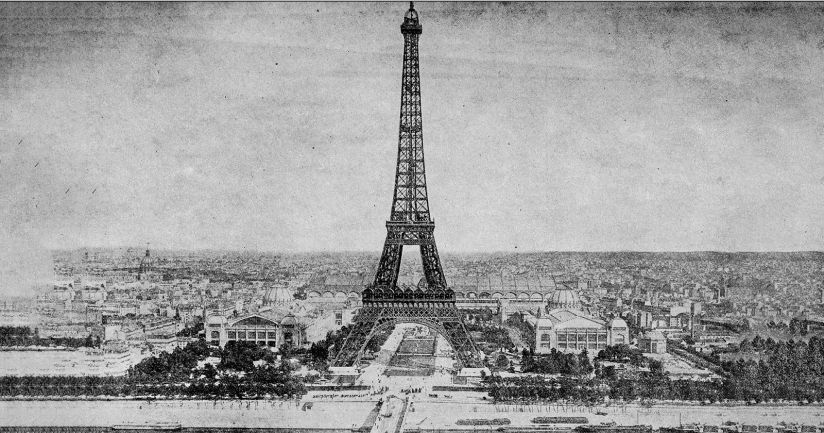How Societe Generale participated in the construction of the "Dame de Fer"
From the outset, Societe Generale has supported major industrial projects and been open to technological progress. With, for posterity, highly innovative financing in the case of the Eiffel Tower's construction, which is celebrating its 137th birthday!

In June 1886, a committee of specialists chose Gustave Eiffel's project to meet a major challenge: build the world's tallest tower to coincide with the Universal Exhibition that was to be held in Paris three years later. It was, in the minds of the event's organisers, as much about highlighting French industrial know-how as about constructing a monument to the glory of "La Ville Lumière" (the City of Light). Eiffel set about this mammoth task without delay.
In January 1887, the French government and the City of Paris gave their backing by granting him the rights to build and operate the tower on the Champ de Mars. To this end, they granted him a subsidy of 1,500,000 francs. However, it quickly became clear that this sum would not be sufficient to allow Eiffel to totally cover the costs of building the tower. He feared he would be unable to meet his commitments and deliver the tower on time…
In a real race against time, the French engineer quickly created the "Société de la Tour Eiffel", a company to both operate the future monument and provide it with the necessary financing. By this stage, two floors of the tower had already been completed but, due to the lack of financial resources, work had more or less ground to a halt. That's when a consortium of three banks, including Societe Generale, mooted the idea of helping him out. Nothing surprising about that given that, since its creation in 1864, the Bank saw itself as a tool for modernising the economy and had become an expert in providing industrial firms with support.
With a proactive policy always open to innovation, it strove to contribute to the financing of the era's flagship projects (railway lines, canals, shipyards, etc.) However, this was still a difficult operation to put into practice. Thanks to its expertise in this field, Societe Generale finally came up with a customised solution totally suited to Gustave Eiffel's needs.
Linger on the first
Joseph-Eugène Schneider, founding father of Societe Generale, is one of the 72 French scientists, engineers and industrialists whose names are engraved in gold letters on the external structure of the first floor of the Eiffel Tower.
Societe Generale was even given a pavilion at the foot of the Tower
The consortium participated to the tune of 2,500,000 francs, or half of Société de la Tour Eiffel's capital, each of the three banks investing a third of the sum. Whilst Eiffel alone assumed the risk of the Tower's construction, the financing was highly innovative insofar as the financial package foresaw its reimbursement through ticket sales. The operation was a resounding success. During the Universal Exhibition, the 324-metre-high Eiffel Tower welcomed two million visitors and its profitability was already ensured!
Societe Generale could be proud of this partnership. And not just because its profit was almost a third of its initial investment – the shares bought for 500 francs were sold for 770 francs as soon as the Exhibition opened. By associating its name with the completion of such an ambitious project, it remained loyal to its founding principles and forged a privileged relationship with its client. Over the years that followed, it continued its collaboration with Gustave Eiffel via successful investments in the "Compagnie des Établissements Eiffel". At the 1900 Universal Exhibition in Paris, Societe Generale was even given a pavilion at the foot of the Tower. But, above all, the Bank can forevermore boast that it contributed to the erection of an extraordinary monument that is a symbol unanimously recognised around the world.